Index
GPU Boost
Point of View / TGT GTX 670 Ultra Charged is based on reference design but is factory overclocked. In fact, only the GPU runs at higher clocks while the memory was left at reference values.
TGT has a meticulous selection of chips for its cards, since their factory overclocks require the best chips, the kind that has a lower leakage and higher average Boost clock. Below is a graph that shows Boost clocks without any additional OC, just the GPU Boost technology in action.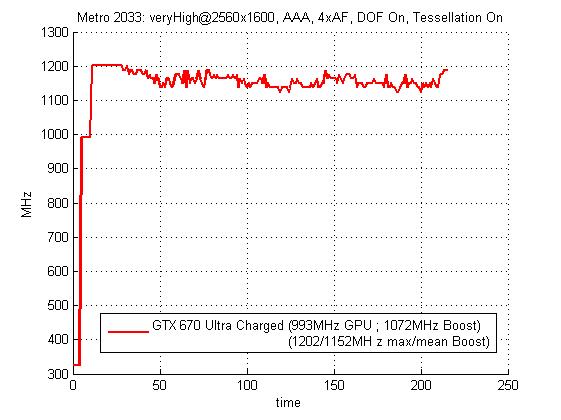
Overclocking
Maximum overclocking of the base GPU clock on our GTX 670 UC card ended up at 1035MHz. Boost was running even after our overclock and we recorded clocks up to 1242MHz. We overclocked the memory by 150MHz (600MHz GDDR5 effectively). We’re convinced that TGT’s effort in picking the best chips would’ve shown in overclocking, but reference cooling meant that we could not squeeze out the maximum. 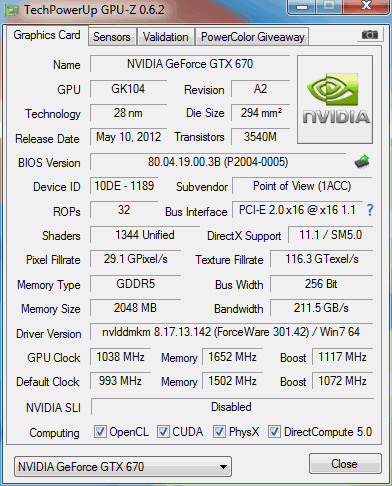
The overclock we did isn’t spectacular, but it was enough for PoV/TGT GTX 670 Ultra Charged to score higher than the reference GTX 680.
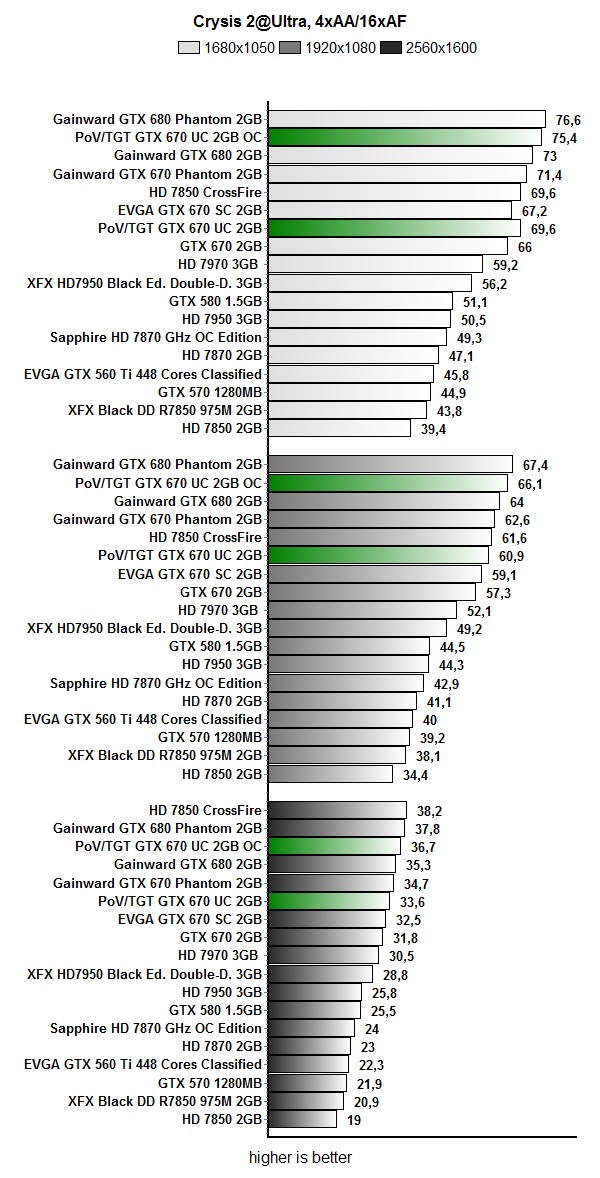
Thermals and Noise
GPU temperatures were within normal values with PoV/TGT’s overclock – we didn’t see it exceed 84ºC. The fan wasn’t too loud but you’ll hear it good in longer gaming sessions, when the card and case get hot. It’s louder than the reference fan, but that’s to be expected with a factory overclock. You’ll hear the fan a bit in idle mode as well, but it’s far from what we’d call loud.
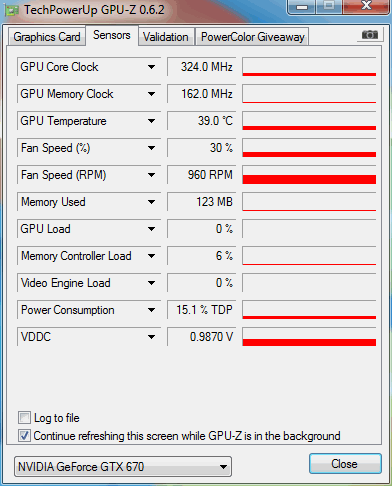
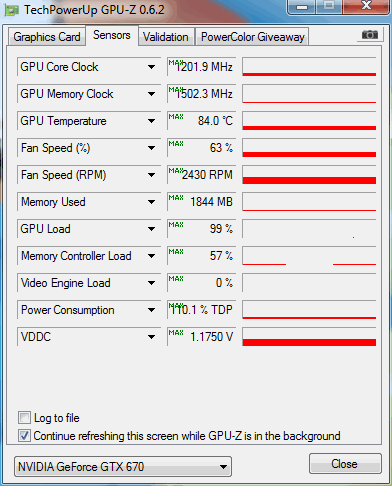
Power Consumption



